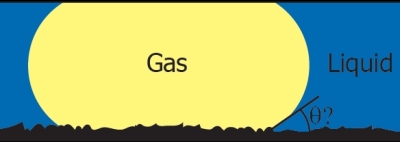Michiel Musterd

Non-Idealities in Multiphase Millifluidics Caused by Partial Wetting
Contact details
- Ir. Michiel Musterd
- Delft University of Technology, TNW-PPE/TP
- Room 0.425/Room 1-160
- Julianalaan 136/Leeghwaterstraat 39, The Netherlands
- m.musterd@tudelft.nl
Research interests
- Partial wetting
- Contact line statics and dynamics
- CFD of surface tension dominated flows
- Multiphase flow in porous media
Social Media
Student projects
MSc
- Statics of microdroplets
- Segmented flow in constricted microchannels
- Making droplets slide
Education
- MSc with honors - Chemical Engineering, Delft University of Technology (2010)
- BSc with honors - Chemical Engineering, Delft University of Technology (2008)
Supervisors
Research description
Summary
In contrast to conventional reactors, the fluid dynamics in multiphase micro- and millireactors are dominated by capillary forces. In partial wetting systems, where energy minimization is obtained with part of the walls in contact with the secondary phase, wall adhesion is an additional factor that can significantly influence the flow. In effect the microscale roughness of the reactor walls (see figure below) changes the flow dynamics and with that the reactor performance.
In this project we aim to develop a CFD model to predict multiphase flow in micro- and millifluidic channels under partial wetting conditions. The focus is on understanding and controlling the dynamics of the gas-liquid-solid interface for channels with and without internal structure.
Currently, we investigate the phenomenon of contact line pinning, in which a droplet is immobilized through chemical or physical obstacles (defects). Although the mechanism for this phenomenon is well understood, only models for limiting cases like single defects and thermodynamic equilibrium situations are available.
Interested? If you are looking for a MSc or BSc project in this field, you can always drop by my office or send me an email at M.Musterd@TUDelft.nl

Pinning of droplets on heterogeneous surfaces
In our experiments we design micropillar arrays on which a water droplet will be suspended in the Cassie state. In this way the droplet 'feels' a physically homogeneous but chemically heterogeneous surface (patches of air and solid). By varying the spatial properties of the pillars we study how a 'real' surface would pin a droplet in place.
The experimental setup consists of a tilting table with a camera mounted on the axis. In this way our reference frame is the tilting table and therefore we can study the deformation of the pinned droplet without having to correct for a tilting baseline. An example of a pinned droplet is shown in the video below.